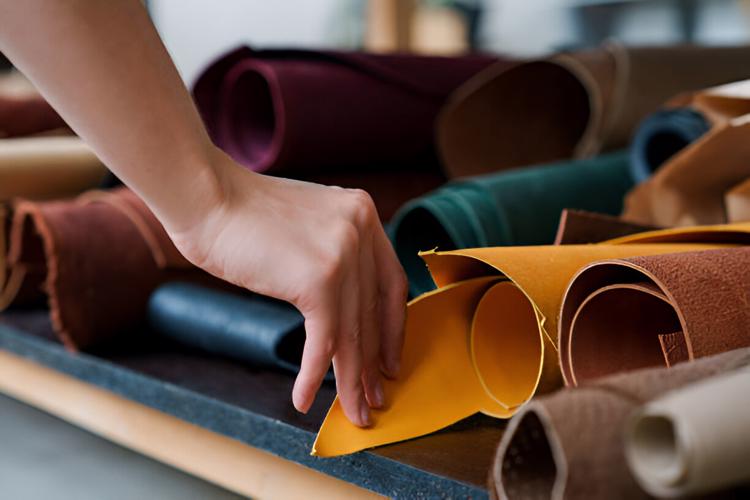Beyond Dawlish
In 2025, leather remains a popular material for all sorts of products, from trendy backpacks to durable shoes. Among the types of leather, buffalo hide and cowhide are two of the most commonly used, each with its unique qualities and uses. Let's dive into what makes each type special and how they are being used today, especially considering the trends and technologies of 2025.
What is Buffalo Hide?
Buffalo hide is made from the skin of buffaloes and is known for its incredible toughness and thickness. This type of leather is less common than cowhide but is highly valued for its durability and distinctive pattern. Each piece of buffalo leather retains the natural texture of the buffalo's skin, including the scars and marks, which many people find appealing because it gives a rustic and authentic look.
What is Cowhide?
Cowhide is the leather obtained from cows and is the most widely used type of leather in the world. It's lighter than buffalo hide and more flexible, making it easier to handle and craft into a variety of products. Cowhide is appreciated for its smooth surface and versatility, which makes it a favorite choice in both the fashion and furniture industries.

Differences in Appearance and Texture
By 2025, the aesthetic and textural differences between buffalo hide and cowhide will be more appreciated than ever. Buffalo hide continues to be chosen for products where a bold, rugged look is desired. Its heavy grain and natural imperfections give items a one-of-a-kind appearance. On the other hand, cowhide features a cleaner and more uniform grain, making it ideal for products that require a smooth and consistent finish, like luxury car interiors or high-end leather jackets.
Durability and Sustainability
Both buffalo and cowhide are durable, but buffalo hide's denser structure makes it particularly resistant to damage and wear, perfect for heavy-duty uses such as motorcycle jackets and outdoor equipment. As sustainability becomes a bigger concern in 2025, the durability of buffalo hide means products last longer, reducing waste and the need for frequent replacements.
Cowhide, while slightly less rugged than buffalo, is still durable enough for everyday items like furniture and handbags. Its flexibility also makes it suitable for a wider range of products. Advances in tanning and processing techniques in 2025 have further enhanced the durability and eco-friendliness of cowhide, aligning with consumers' growing preference for sustainable products.
Trends Influencing Leather Choices in 2025
Sustainability concerns significantly influence consumer choices in 2025. Both buffalo and cowhide leathers are considered based on their environmental impact:
-
Eco-friendly Processing: Advances in tanning processes have made leather production more environmentally friendly. Both types of hides are now processed using methods that reduce harmful chemicals and waste.
-
Longevity and Sustainability: Products that offer longer lifespans, such as those made from buffalo hide, are in demand as they contribute to lower consumption patterns and waste.
Popular Uses in 2025
In the USA, the use of both types of leather has adapted to modern demands. Buffalo hide is increasingly used in outdoor gear and adventure equipment, appealing to consumers who value durability and a tough aesthetic. Meanwhile, cowhide remains popular in fashion, automotive, and home décor industries, cherished for its adaptability and elegance.
Making the Right Choice
Choosing between buffalo hide and cowhide depends on the specific needs and preferences of the user. If someone is looking for leather that will stand up to rigorous use and prefers a natural, earthy look, buffalo hide is the better choice. For those who need a versatile and refined material, cowhide is ideal.
Conclusion
As we navigate the evolving landscape of leather goods in 2025, the distinctions between buffalo hide and cowhide become crucial in making informed choices for both consumers and craftsmen. Buffalo hide, known for its robustness and unique aesthetic, is preferred for products requiring endurance and a distinct rugged appearance. It caters to a niche market where durability trumps other factors, ideal for outdoor enthusiasts and those in need of heavy-duty leather goods. On the other hand, cowhide’s versatility and smoother finish continue to make it a favorite across a wide range of applications, particularly in fashion and interior design where flexibility and a consistent appearance are valued.
Moreover, the growing emphasis on sustainable practices within the leather industry has further shaped the production and selection of these leathers. Both buffalo and cowhide are now processed using environmentally friendlier methods, reflecting the industry's response to consumer demand for more ethically produced materials. This shift not only affects how leather goods are made but also how they are perceived in the market. By choosing the right type of leather, consumers and producers not only contribute to the longevity of their products but also support sustainable practices that benefit the larger ecological system.




